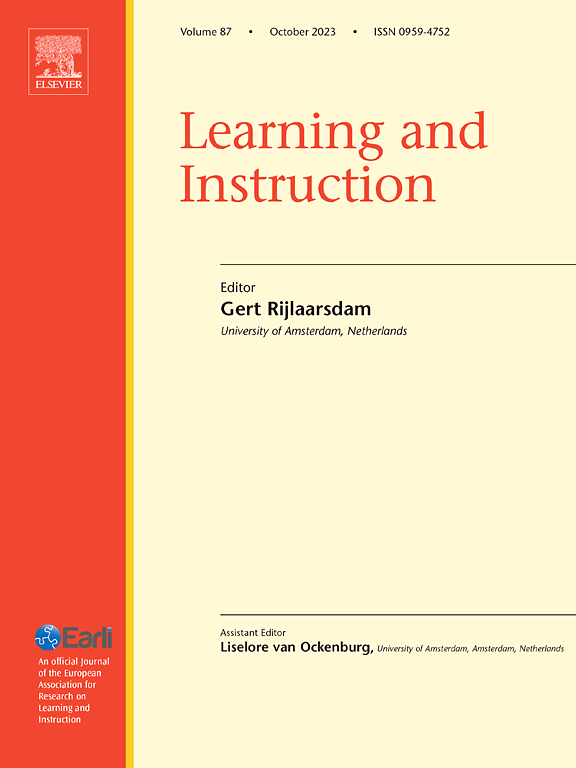认知负荷在学习中的神经关联:图形理解的fMRI研究
IF 4.9
1区 教育学
Q1 EDUCATION & EDUCATIONAL RESEARCH
引用次数: 0
摘要
认知负荷理论认为,对人类认知系统的过度要求会导致认知超载和学习障碍。然而,虽然认知负荷的神经相关性尚不清楚,但功能磁共振成像(fMRI)等神经成像技术可能有助于提供这些问题的答案。考虑到这一潜力,本研究旨在通过对图形理解的fMRI研究来探讨哪些脑结构与认知负荷相关。本研究的样本由15名本科生组成。方法基于受试者内部设计,参与者在接受磁共振成像(MRI)扫描的同时,使用分裂(即高认知负荷)和整合(即低认知负荷)图表回答理解问题。结果与综合图相比,分割图的准确性较低,反应时间较慢。fMRI数据显示认知负荷与额顶叶网络有关。更具体地说,多需求网络在认知负荷高的图上比认知负荷低的图上显示出更大的激活。结论认知负荷的产生可能与域-通用注意脑网络有关。本文章由计算机程序翻译,如有差异,请以英文原文为准。
The neural correlates of cognitive load in learning: An fMRI study on graph comprehension
Background
Cognitive load theory suggests that excessive demands on the human cognitive system can lead to cognitive overload and impaired learning. However, whilst the neural correlates of cognitive load are unclear, neuroimaging techniques such as functional magnetic resonance imaging (fMRI) may help provide answers to these questions.
Aims
Considering this potential, this study aims to investigate which brain structures are associated with cognitive load through conducting an fMRI study on graph comprehension.
Sample
The study's sample consists of 15 undergraduate students.
Methods
Based on a within-subjects design, participants answered comprehension questions using split (i.e., high cognitive load) and integrated (i.e., low cognitive load) graphs whilst undergoing a magnetic resonance imaging (MRI) scan.
Results
Participants exhibited lower levels of accuracy and slower reaction times with split graphs compared to integrated graphs. The fMRI data showed that cognitive load was associated with the frontoparietal network. More specifically, the multiple demand network revealed greater activation in graphs with higher cognitive load than those of lower cognitive load.
Conclusions
These findings may indicate that a domain-general attentional brain network is responsible for cognitive load.
求助全文
通过发布文献求助,成功后即可免费获取论文全文。
去求助
来源期刊

Learning and Instruction
Multiple-
CiteScore
11.30
自引率
4.80%
发文量
109
期刊介绍:
As an international, multi-disciplinary, peer-refereed journal, Learning and Instruction provides a platform for the publication of the most advanced scientific research in the areas of learning, development, instruction and teaching. The journal welcomes original empirical investigations. The papers may represent a variety of theoretical perspectives and different methodological approaches. They may refer to any age level, from infants to adults and to a diversity of learning and instructional settings, from laboratory experiments to field studies. The major criteria in the review and the selection process concern the significance of the contribution to the area of learning and instruction, and the rigor of the study.
 求助内容:
求助内容: 应助结果提醒方式:
应助结果提醒方式:


